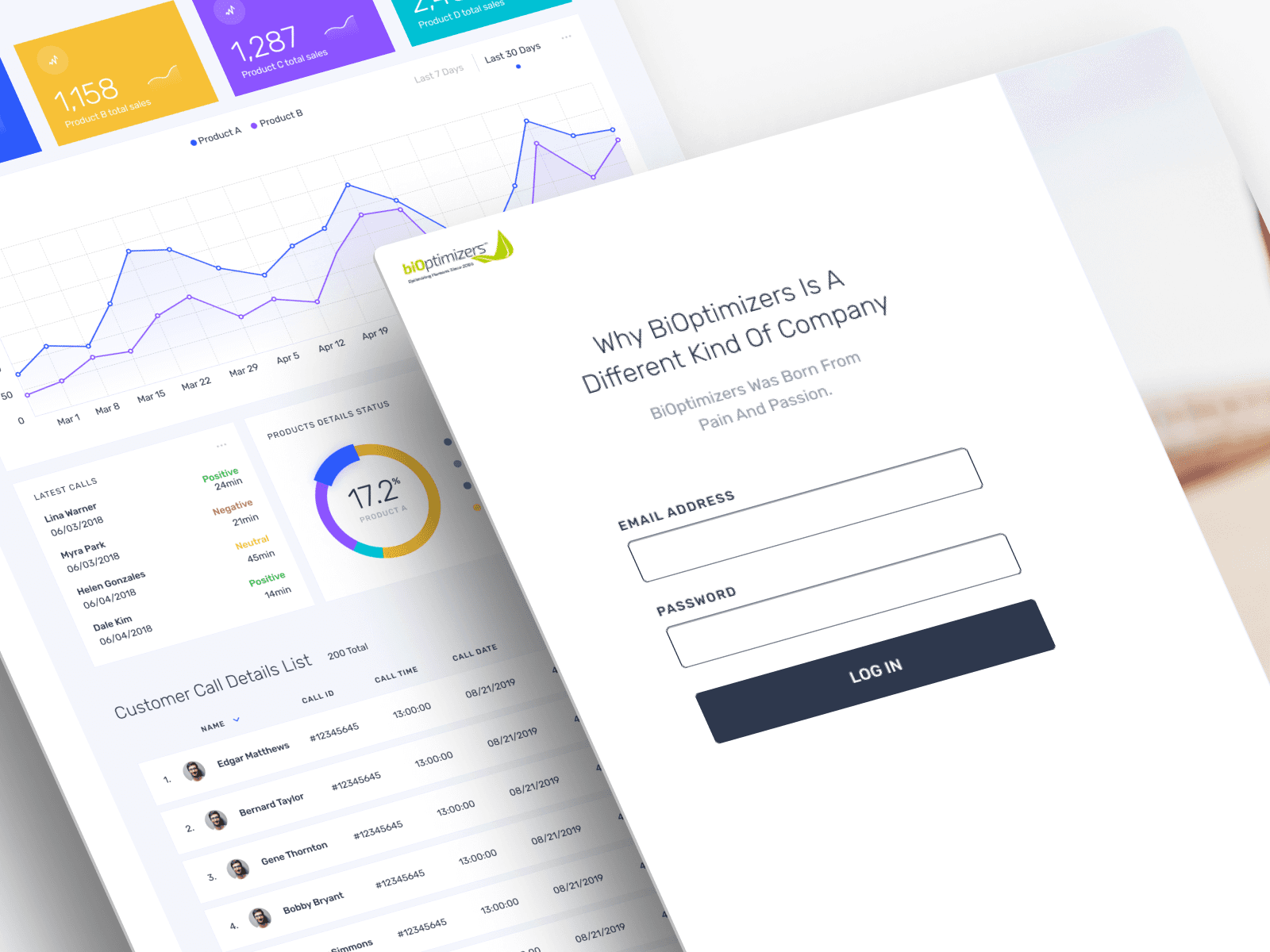Streamlining Success: The Journey of BiOptimizer's CS Dashboard App
Empowering Customer Service through Innovation and Well-Being
BiOptimizer, a company at the forefront of promoting Healthy High Performance, is committed to empowering humanity to reach optimal well-being in body, mind, and soul. This ethos extends beyond their products to encompass every aspect of their operations, including the efficiency and effectiveness of their customer service (CS) team. Recognizing a critical challenge in their existing process, where CS agents and the development team were bogged down by a cumbersome and time-consuming process of generating and managing product links, BiOptimizer identified a need for a solution. The objective was clear: design and implement a CS Dashboard app that not only streamlines this process but also aligns with the company's mission of promoting high performance and well-being.
The Challenge
The core issue at BiOptimizer revolved around a labour-intensive and inefficient system for generating and managing unique product links, a process integral to tracking the sales performances of CS agents. This system was time-consuming and frustrating for agents and the development team, contradicting BiOptimizer's commitment to well-being and high performance.
CS agents were saddled with a manual, error-prone link-generation process, significantly hampering their ability to focus on customer interactions and sales. Each new product, promotion, or hire necessitated a bespoke link, creating an operational bottleneck. For the development team, the demand for creating and managing these links diverted resources from more strategic projects, impacting overall productivity.
This inefficient process had a ripple effect: it slowed down response times, affected sales tracking accuracy, and ultimately impacted the agents' commission and motivation. Clearly, this method was not sustainable and did not align with BiOptimizer's mission of fostering optimal well-being in the body, mind, and soul, particularly for their employees.
Design Process
Features of the CS Dashboard App
The CS Dashboard app, designed for BiOptimizer, incorporates several key features that streamline operations, enhance productivity, and align with the company's mission of promoting optimal well-being:
Automated Link Generation: The app's central feature is its ability to generate unique product links for each CS agent automatically. This feature significantly reduces the time and effort involved in link creation, allowing agents to focus more on customer interaction and sales.
Real-Time Sales Performance Tracking: The app provides a real-time dashboard that displays each agent's sales performance. This feature enables agents to monitor their progress, stay motivated, and align their efforts with potential commissions, fostering a sense of achievement and well-being.
User-Friendly Interface: Reflecting BiOptimizer's focus on well-being, the app features a clean, intuitive interface. This design reduces cognitive load and enhances user experience, making it easier for agents to navigate and use the app efficiently.
Scalability and Future Integration: The app is designed with scalability, ensuring it can easily integrate with BiOptimizer's future global design system. This foresight in design ensures the app's longevity and adaptability as the company grows and evolves.
These features collectively contribute to a more efficient, satisfying, and wellness-oriented work environment for BiOptimizer's CS agents.
Implementation and Testing
Results and Impact
The implementation of the CS Dashboard app at BiOptimizer resulted in remarkable improvements. CS agents experienced a significant reduction in administrative workload, leading to increased focus on customer interactions and sales. This shift boosted sales performance and enhanced agent well-being, aligning perfectly with BiOptimizer's mission.
Lessons Learned
The development of the CS Dashboard app provided valuable insights for BiOptimizer. Firstly, the importance of user-centric design was reinforced; by involving CS agents in the design process, the app was tailored to meet their needs, enhancing usability and effectiveness. Secondly, the project highlighted the need for agile development practices, allowing for flexibility and rapid adaptation based on user feedback. Lastly, it underscored the alignment of technological solutions with organizational values — in this case, enhancing operational efficiency while promoting employee well-being, reflecting BiOptimizer's ethos. These lessons will guide future projects, ensuring they are user-focused and aligned with the company's mission.
Conclusion
The CS Dashboard app is a testament to BiOptimizer's commitment to its ethos of Healthy High Performance. By effectively addressing a critical operational inefficiency, the app has not only streamlined the sales process but also uplifted the overall well-being of the CS team. This project exemplifies how thoughtful design and technology can work harmoniously to enhance business efficiency and employee satisfaction. As BiOptimizer continues to grow and evolve, this app will serve as a cornerstone in its journey, demonstrating the power of innovative solutions in fostering an optimal state of well-being in the workplace.




